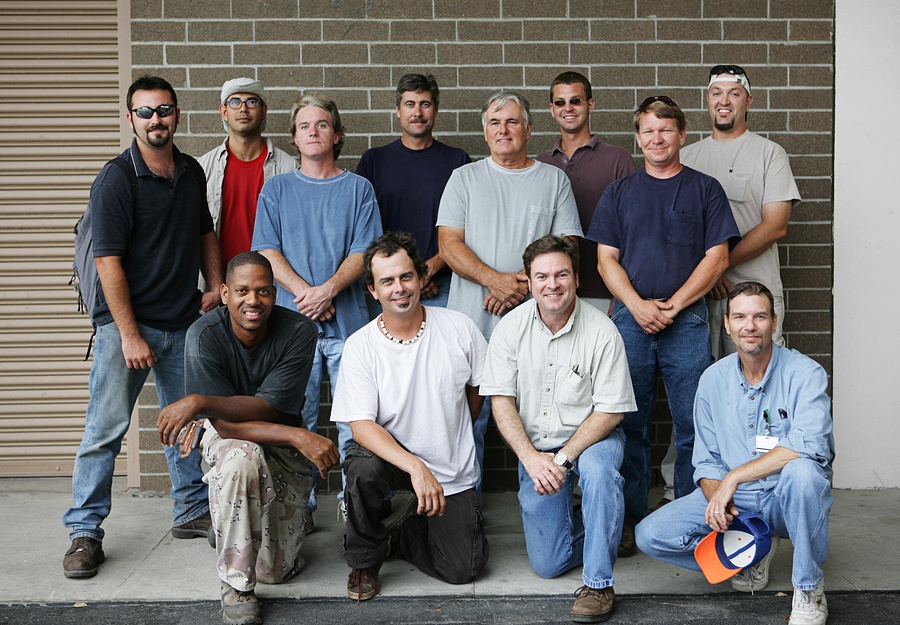
Three case studies for improving diversity in the workplace
Yes, although previously we have discussed the innate biases that still exist in the hiring practices of many companies today, there are some inspiring businesses that are realizing the benefits of having a diverse workforce and are finding creative ways of achieving this.
The engineering company BAE Systems is one such company:
“At BAE Systems we value diversity because it benefits our people and helps our business grow. A diverse workforce, with employees drawn from all backgrounds encourages innovation, improves productivity and brings us closer to our customers. As a result, we aim to create an inclusive environment where every one of our employees is valued and has the opportunity to fulfil their potential and contribute to our business success. However, like many companies notably in the Engineering sector, we also recognize that we have underrepresented groups therefore see it as important to take positive action to improve the diversity within our Company.”
In this case study, they demonstrate how they saw a way to create an additional route into their summer internship program. They partnered with the charity organization Windsor Fellowship, which specializes in designing and delivering personal development and leadership programs, to identify individuals including other ethnic and gender designated minorities. Together they were able to support these individuals through the recruitment process to give them the best chance of securing an internship.
As a result, they have already noticed a significant increase of interns from the above groups and they plan on expanding their internship program and continue to reach out to as wide a talent pool as possible.
The management at Sky, realizing that diverse teams deliver the best results, is pushing towards achieving a 50/50 gender split among its managers. As of Jan 2017, 40% of the media senior managers were women, a 10% rise since 2015.
They have achieved this turn around using a three-tiered approach. First, they are levelling the playing field through 50/50 shortlists for all senior roles, second, they have developed the “Women in Leadership” sponsorship and development program and third, they are attracting talented women through targeted marketing.
The team at Sky have also recognized the need to create more flexible working conditions, moving away from the 9 to 5 norm, to give women a chance to balance career with family, as it is recognized that women generally bear the brunt of child care.
In this case study from Harvard Business School, it tells the story of how the company Sodexo went from being the target of a class action suit against them in 2001, for discrimination in their promotion decisions, to be a world leader in diversity employment. In 2009 it formed the Sodexo Women’s International Forum for Talent, which focused on the follow three objectives:
- Engaging the organization by sharing the business case for gender equality and raising awareness through training.
- Creating a culture of inclusion by addressing issues of work-life balance (important to both men and women) and developing women’s networks.
- Developing women’s careers through mentoring initiatives and encouraging women to pursue developmental opportunities.
In November 2017, Sodexo earned recognition on Diversity Best Practice’s inaugural Inclusion Index. The company has also been included in the DiversityInc’s Hall of fame, with 47% women in management, aiming to have at least 40% women in senior management positions by 2025.
The management team at Sodexo realize that there is more work to be done, especially in outside of their American operations, however they believe that they are now moving in the right direction and although they have had great success, now is not the time to become complacent. The company will continue to develop its diversity priorities country by country, with priorities focused on five different dimensions of difference: gender, race/ethnicity, sexual orientation, disabilities, and age.
Lisa Peers, CEO and Head Trainer has been helping people communicate better at work since 1998. The Peers and Players offer diversity and Inclusion programs to companies globally. With offices in the USA, and Australia, they have more than 300 communication experts around the world who are local, culturally aware and able to guide your staff, to achieve more open and clear communication styles. Contact us now to discuss your challenges: info@peersandplayers.com
www.peersandplayers.com


 About us
About us